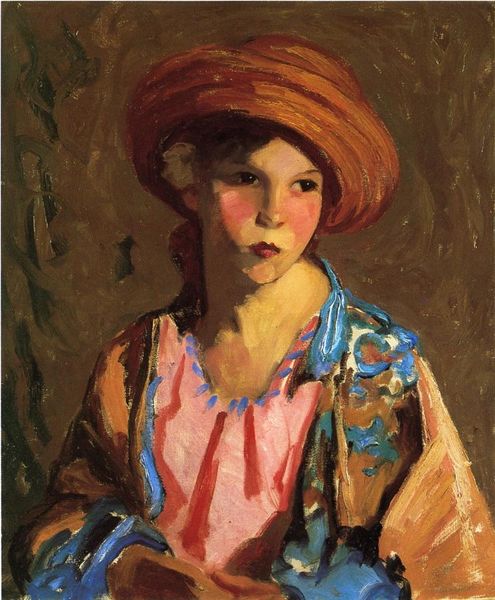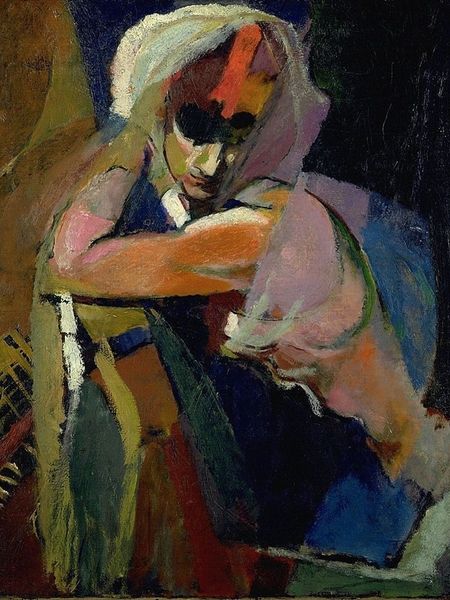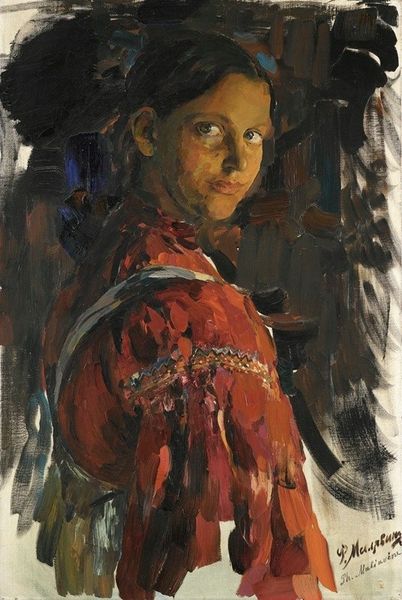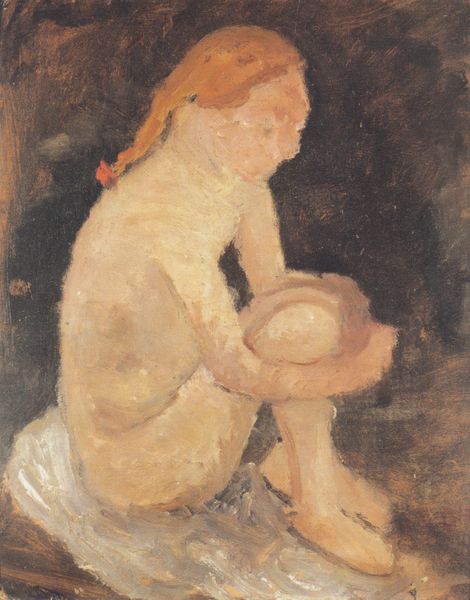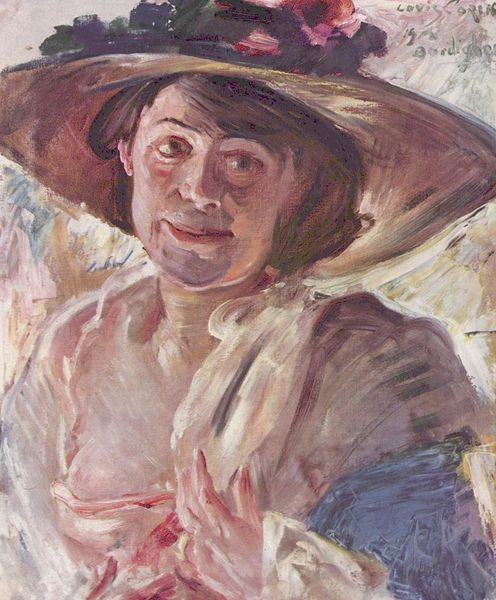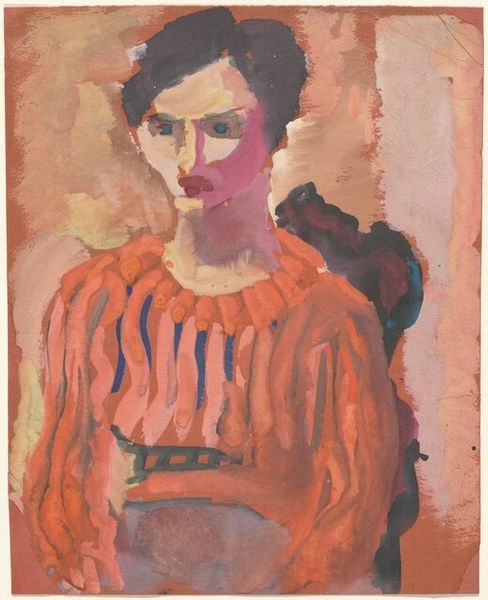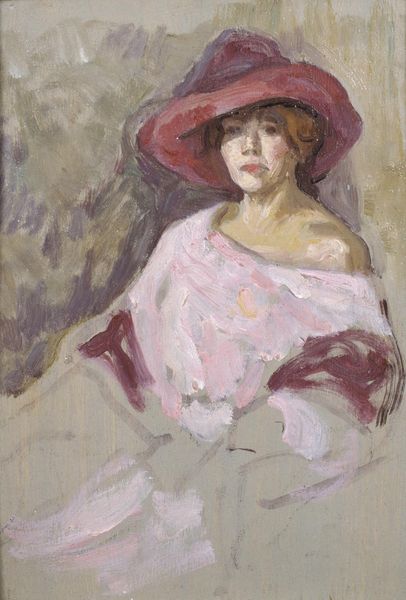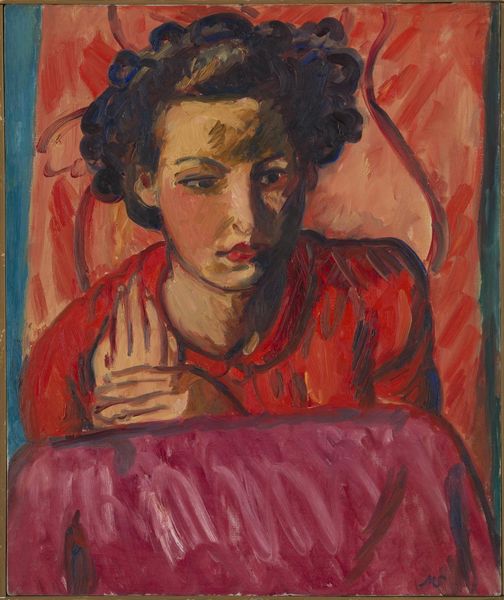
#
abstract expressionism
#
abstract painting
#
possibly oil pastel
#
oil painting
#
fluid art
#
neo expressionist
#
acrylic on canvas
#
portrait art
#
fine art portrait
#
expressionist
Copyright: Nikola Martinoski,Fair Use
Editor: So, this is Nikola Martinoski's "Waitress" from 1935. It looks like an oil painting, and what strikes me first is the muted color palette. She looks tired, maybe a little resigned. What do you see in this piece? Art Historian: What I find particularly compelling is the historical context. This painting, made in the mid-1930s, really speaks to the socio-economic realities of the time. Consider the rise of social realism. It depicts ordinary people and their everyday lives. How do you think Martinoski's "Waitress" might engage with that movement, even tangentially? Editor: I guess the subject matter, an ordinary waitress, aligns with that, but his style is far from being realistic, right? Art Historian: Precisely. This piece isn't necessarily about faithful representation, but more about the visual construction of her status. Notice the somewhat loose brushwork and somber tones - what might those elements convey? Does it romanticize or challenge the image of the working class? Editor: Maybe he wants to show some empathy for her. Art Historian: Exactly. Empathy can be a very powerful social and political tool. Martinoski may want us to confront our perceptions and judgements regarding people in service positions and explore these concepts in the public sphere. Editor: I didn’t realize it could mean so many things! Thank you for providing such helpful context. Art Historian: You're welcome! It is always interesting to examine a piece of art considering not only what is visibly represented, but what the artwork means from a social, political and historical perspective.
Comments
No comments
Be the first to comment and join the conversation on the ultimate creative platform.
